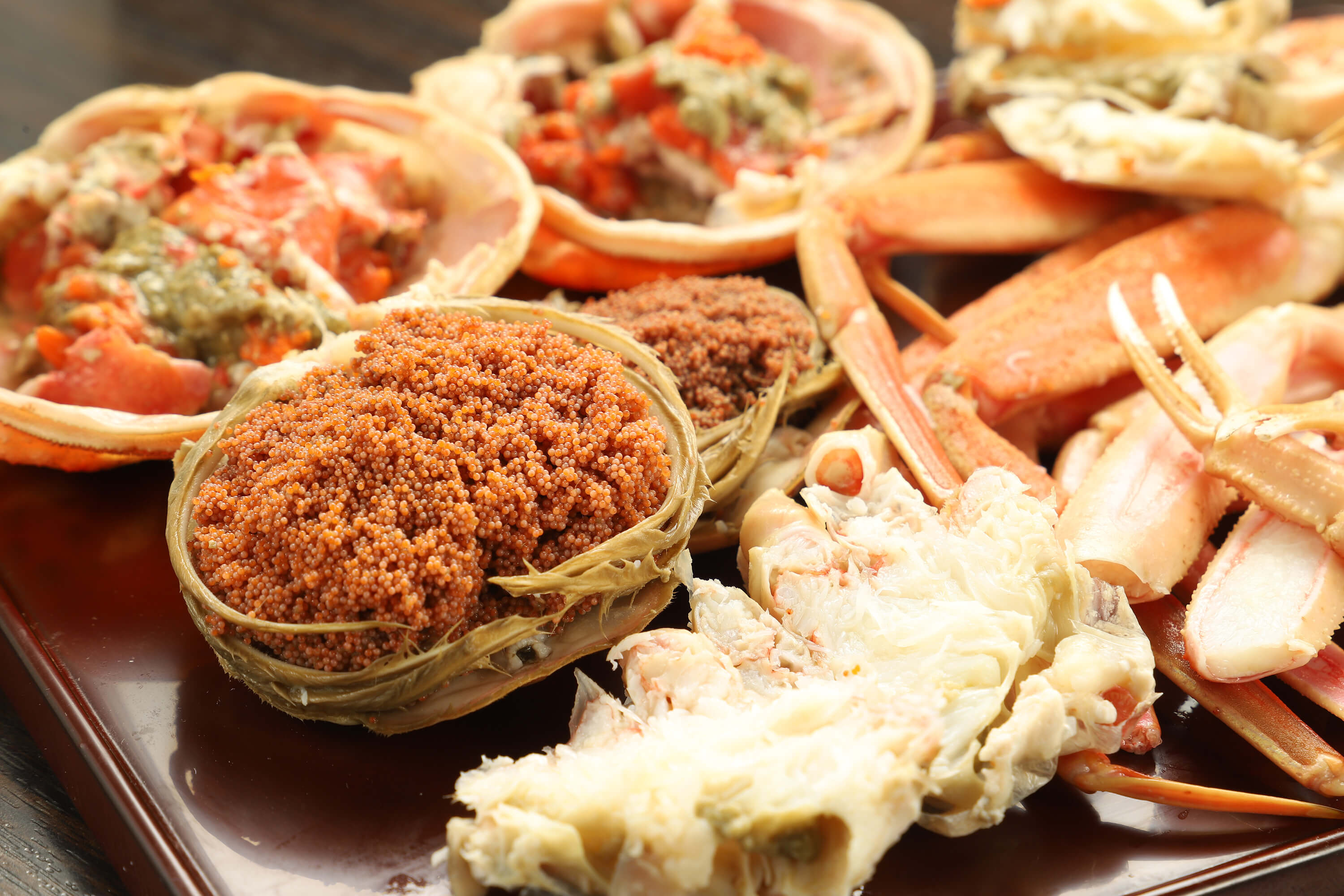Noto Peninsula Wide Area Tourism Association
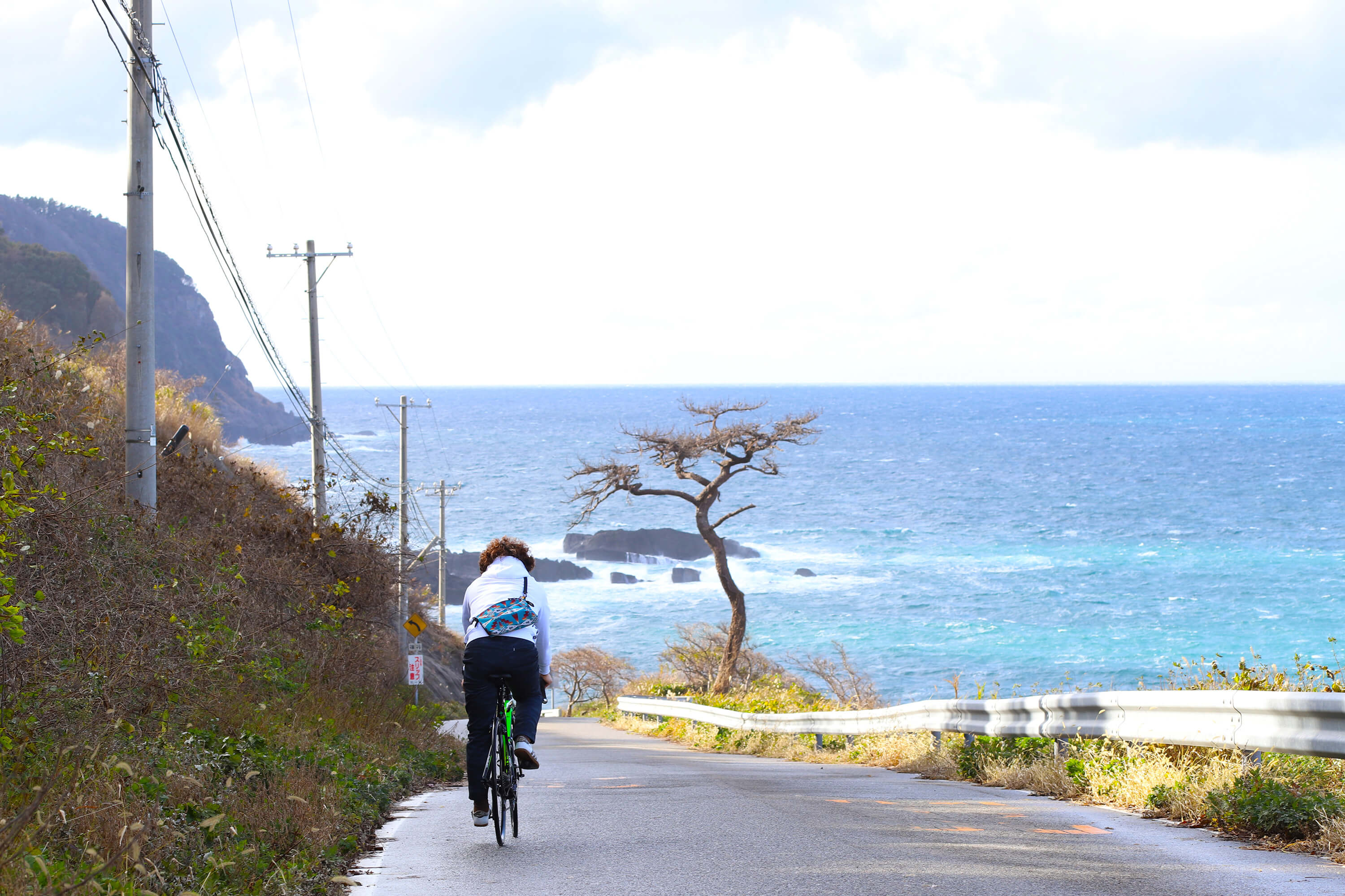
Bicycle journey along seaside roads in Noto
On the Noto Peninsula, which protrudes into the Sea of Japan, you can enjoy the scenery of the Noto Satoyama Satoumi designated as a World Agricultural Heritage Site. You can also enjoy cycling while feeling the dynamic rough waves of the Sea of Japan and viewing the countryside. National Route 249 along the coastline is relatively easy to cycle along, and sightseeing spots are scattered along the route. There are steep curves, narrow roads and undulating roads, but you can enjoy cycling at your own pace. Only on your bicycle can you experience riding along a seaside road that seems to suck you into the sea.
At several locations in the Noto Peninsula, including Michinoeki Wajima Furatto Homu, electric assist bicycles are available for rent. They are convenient for going out for a while or for cruising around the city. There are many tourist information centers, so if you get tourist information there, you can expand your range of activities.
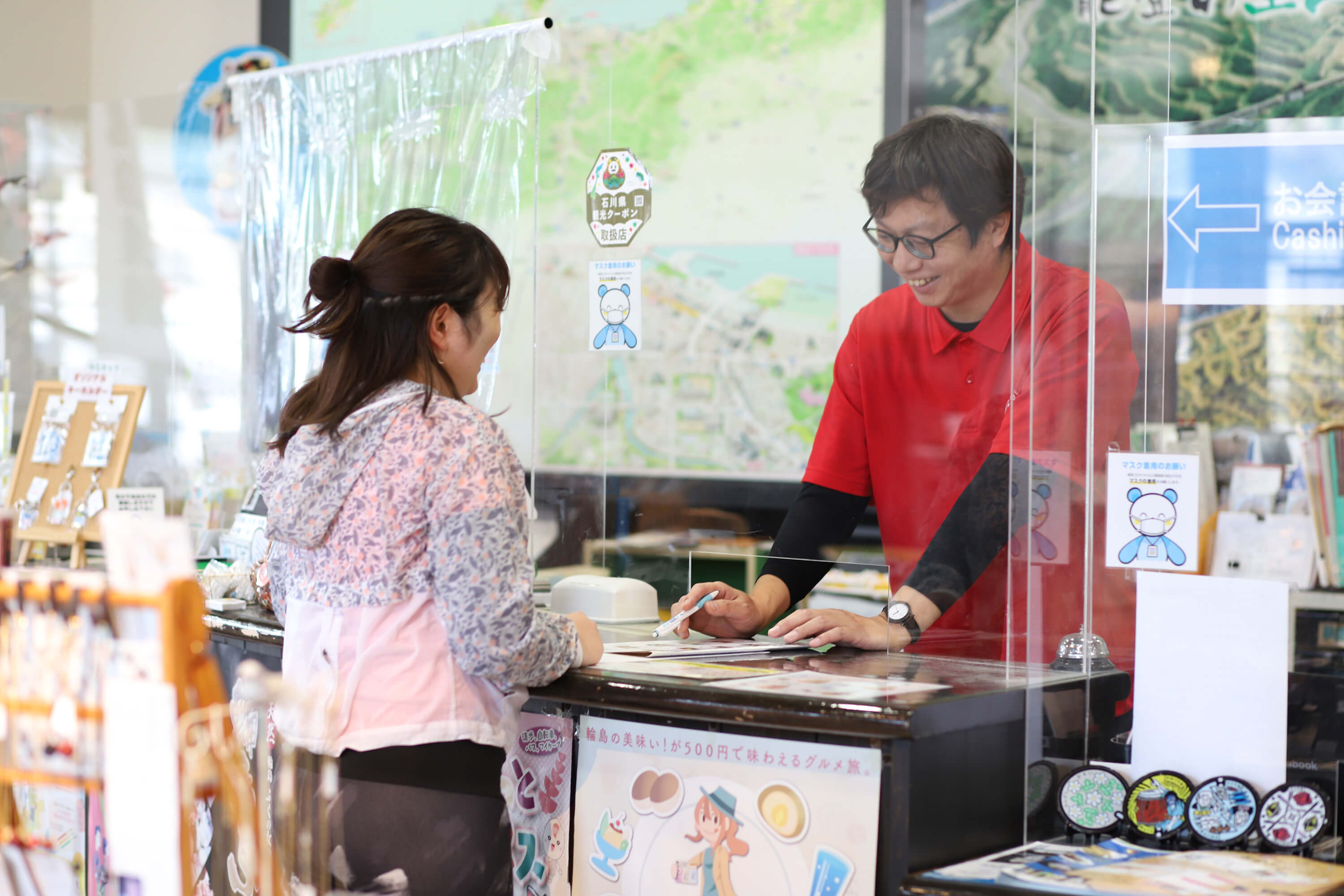
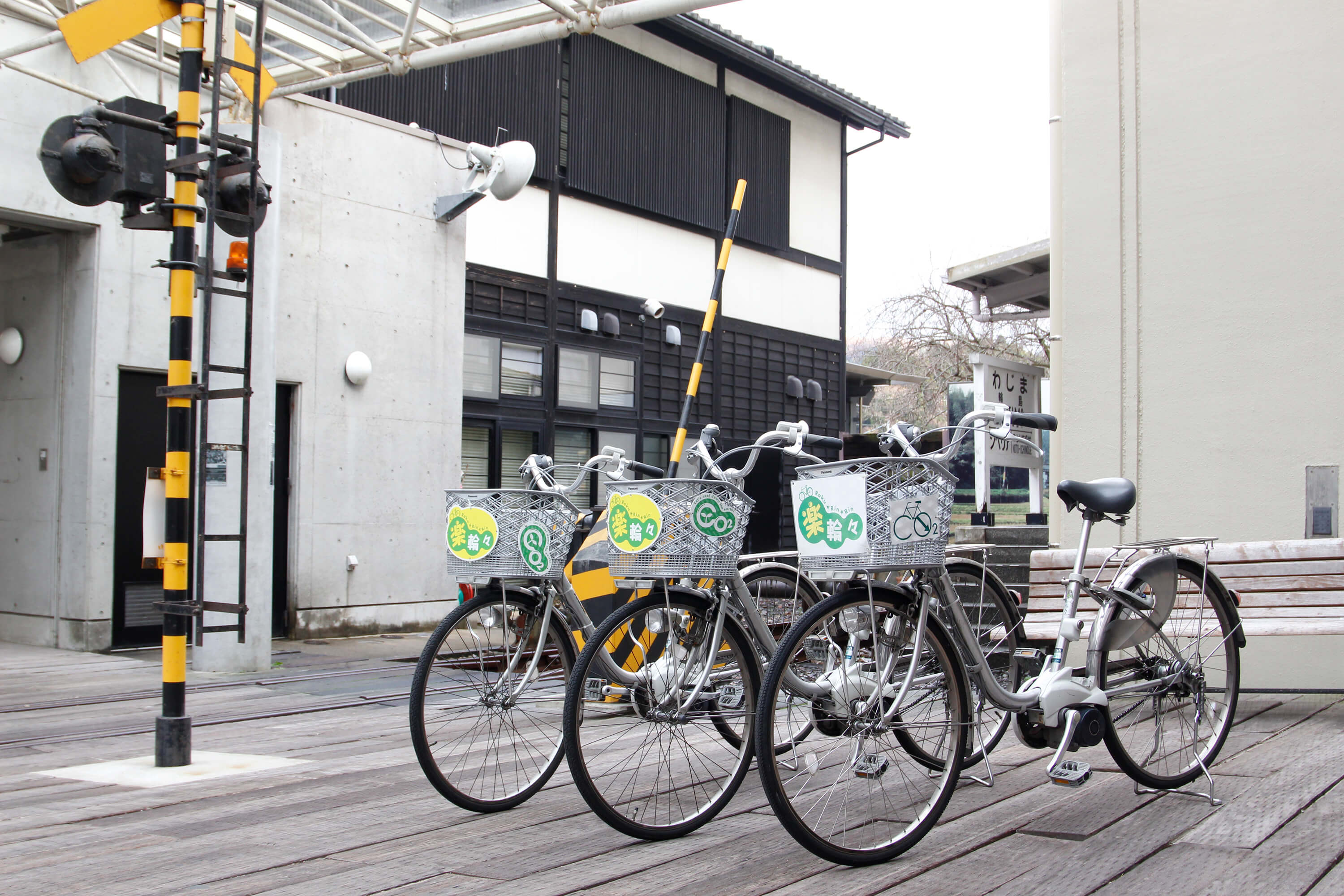
Wajima viewpoints where you can relax in the original landscape
The Noto Peninsula is about 300 km in circumference and there are many viewpoints, so it is best to check how to go around it by bicycle beforehand. For example, when cycling in Wajima, Okunoto’s top tourist spot located in the northwest of the Noto Peninsula, Shiroyone Senmaida, is a must-see spot. If you go along National Route 249 from Wajima to Sosogi, you will see terraced rice paddies on steep slopes facing the sea. The number of rice paddies is 1,004! It is an original landscape of Wajima that represents the satoyama (forest village) and satoumi (fishing village) of Noto.
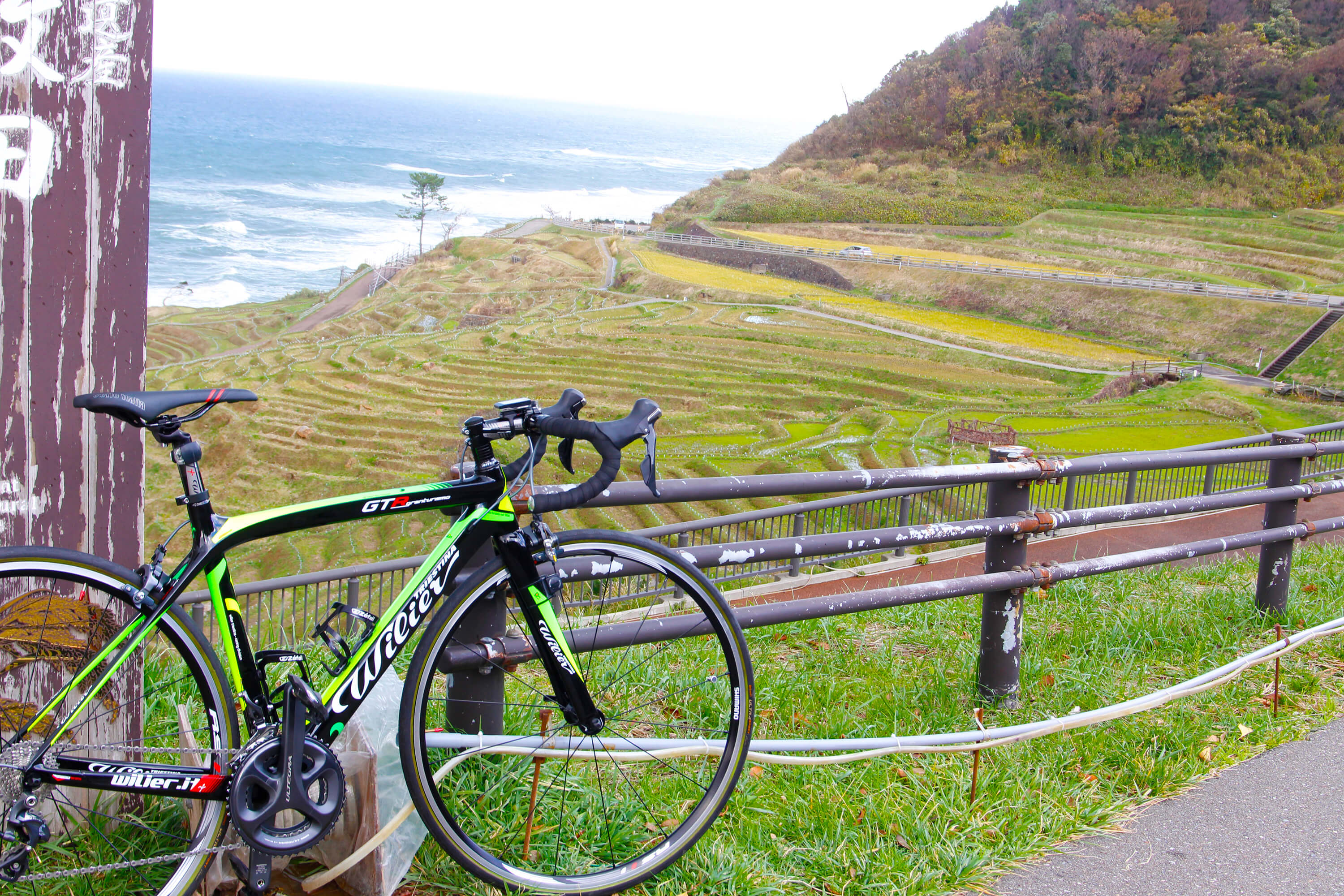
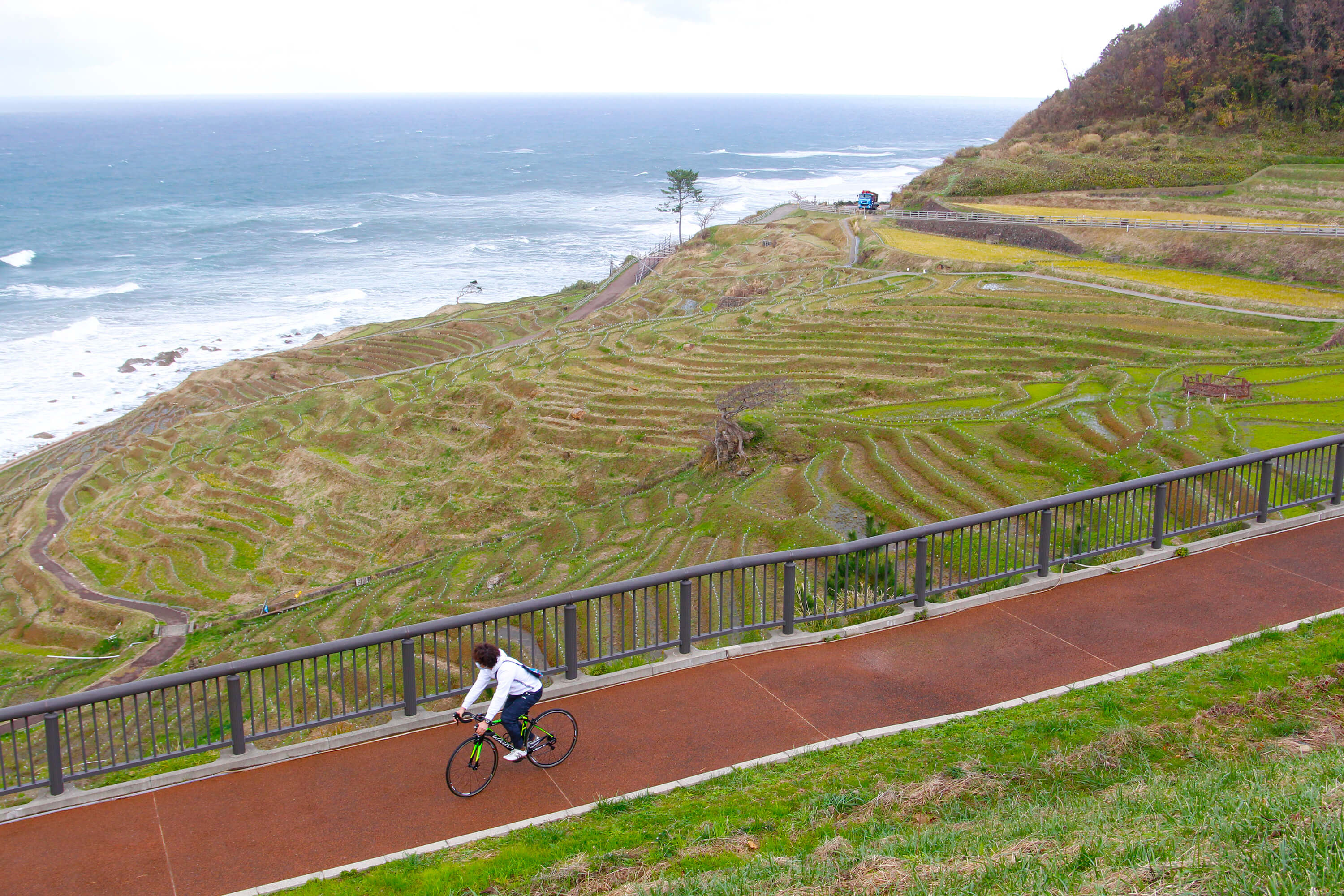
Cycling along the Nishiho Coast, which stretches 12.5 km westward from downtown of Wajima City, you can see oddly shaped rocks such as Zozobana (elephant’s nose rock) and Meotoiwa (married couple rock), and it will take you to the Osawa and Kamiosawa areas further along the road. Fences called “magaki” made of thin bamboo about 5 meters high protect houses by preventing seasonal winds from the sea in winter and blocking the afternoon sun in summer. Don’t miss the cultural landscape, which is rare now, where you can feel the wisdom of Noto’s way of life.
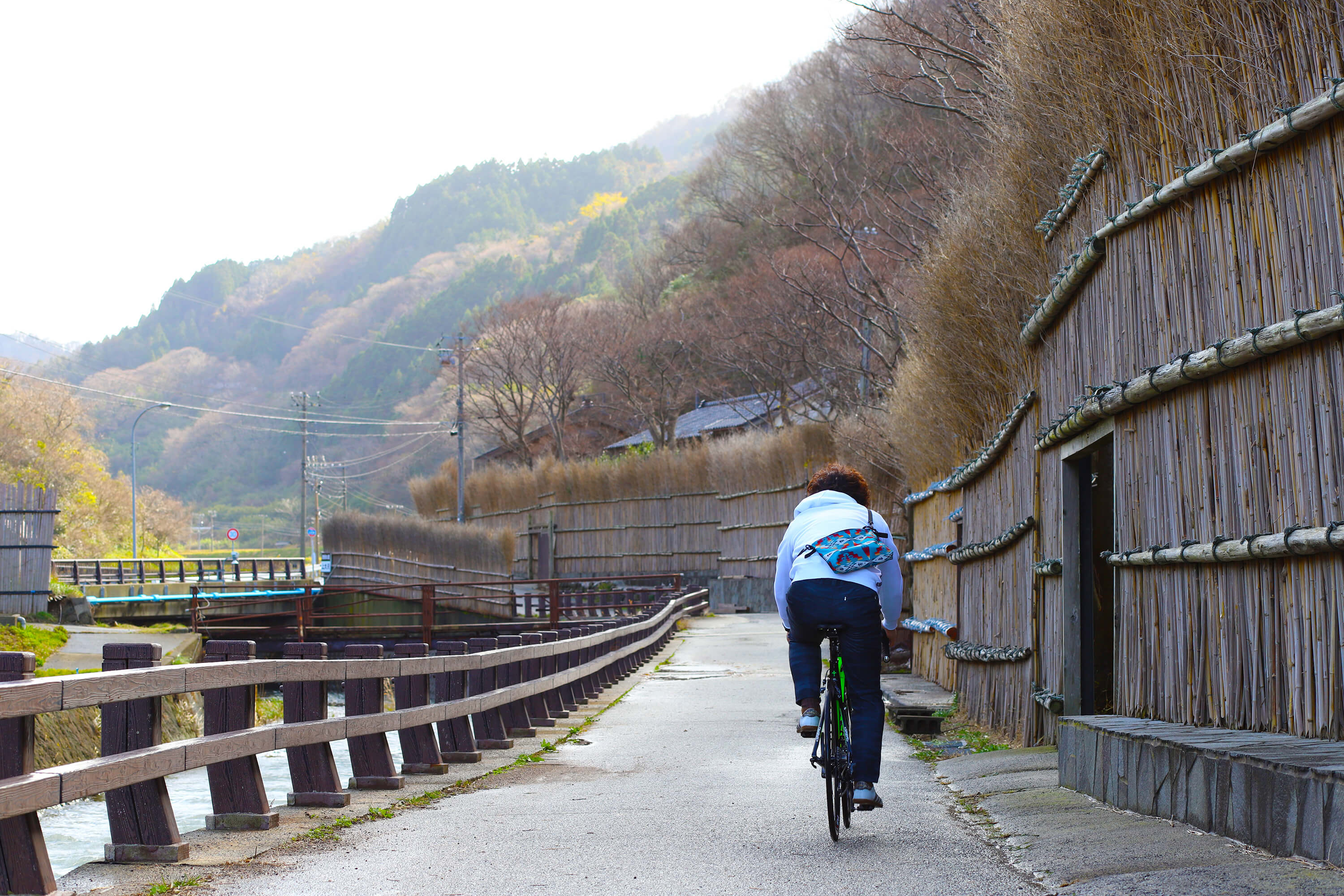
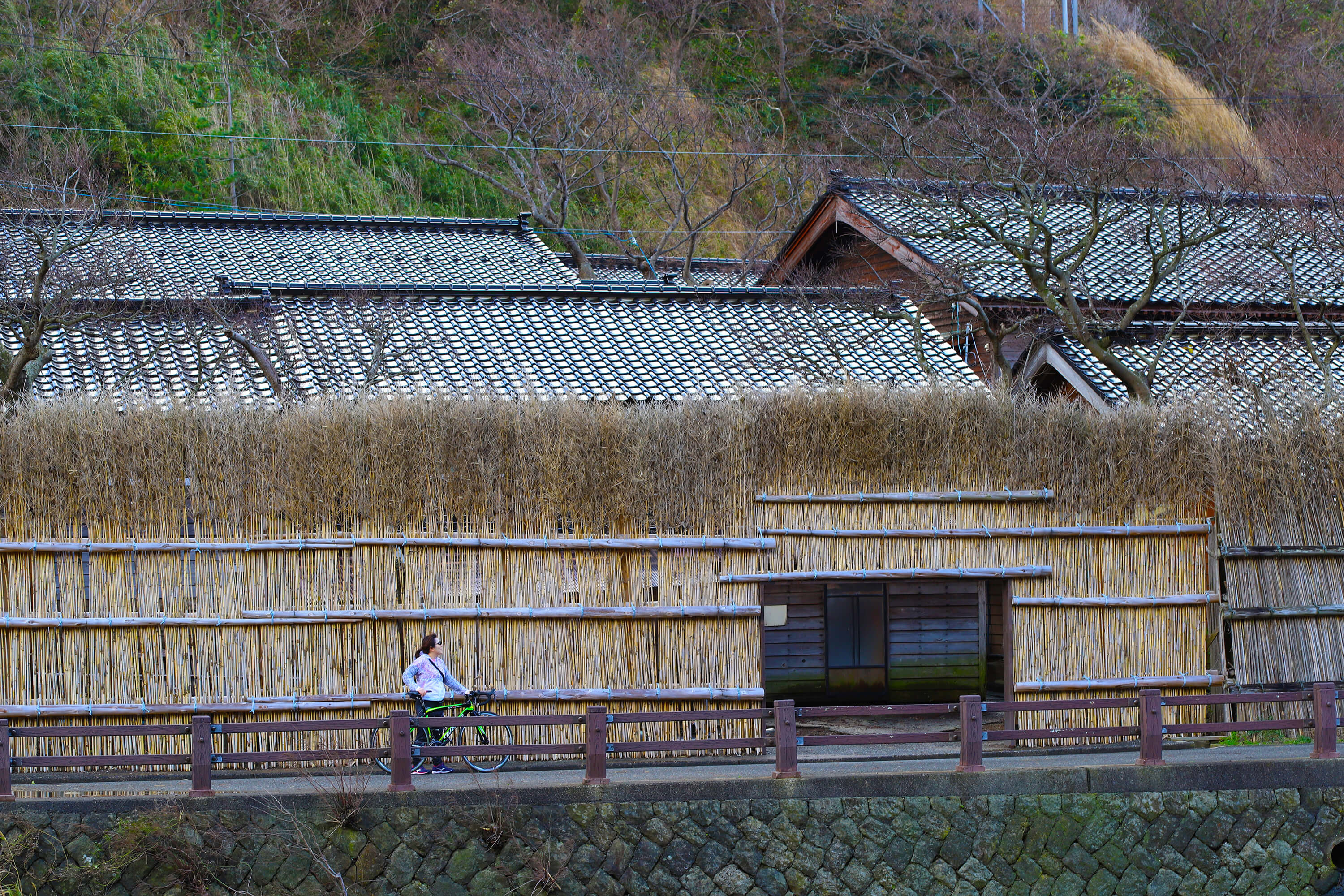
Huge goshinto kiriko lanterns and exquisite Wajima lacquerware fascinate visitors
In various parts of the Noto Peninsula, festivals are held from summer to autumn, and sacred lanterns called kiriko are raised up. At the Wajima Kiriko Kaikan in Wajima City, about 30 large and small kiriko are displayed, some of which are over 12 meters tall and weigh 2 tons. You can see kiriko from above in the aerial corridor on the second floor. A large screen theater shows scenes from the festival, and the traditional Japanese flute and drum music are played inside the building, so you can feel the realistic sense of the festival.
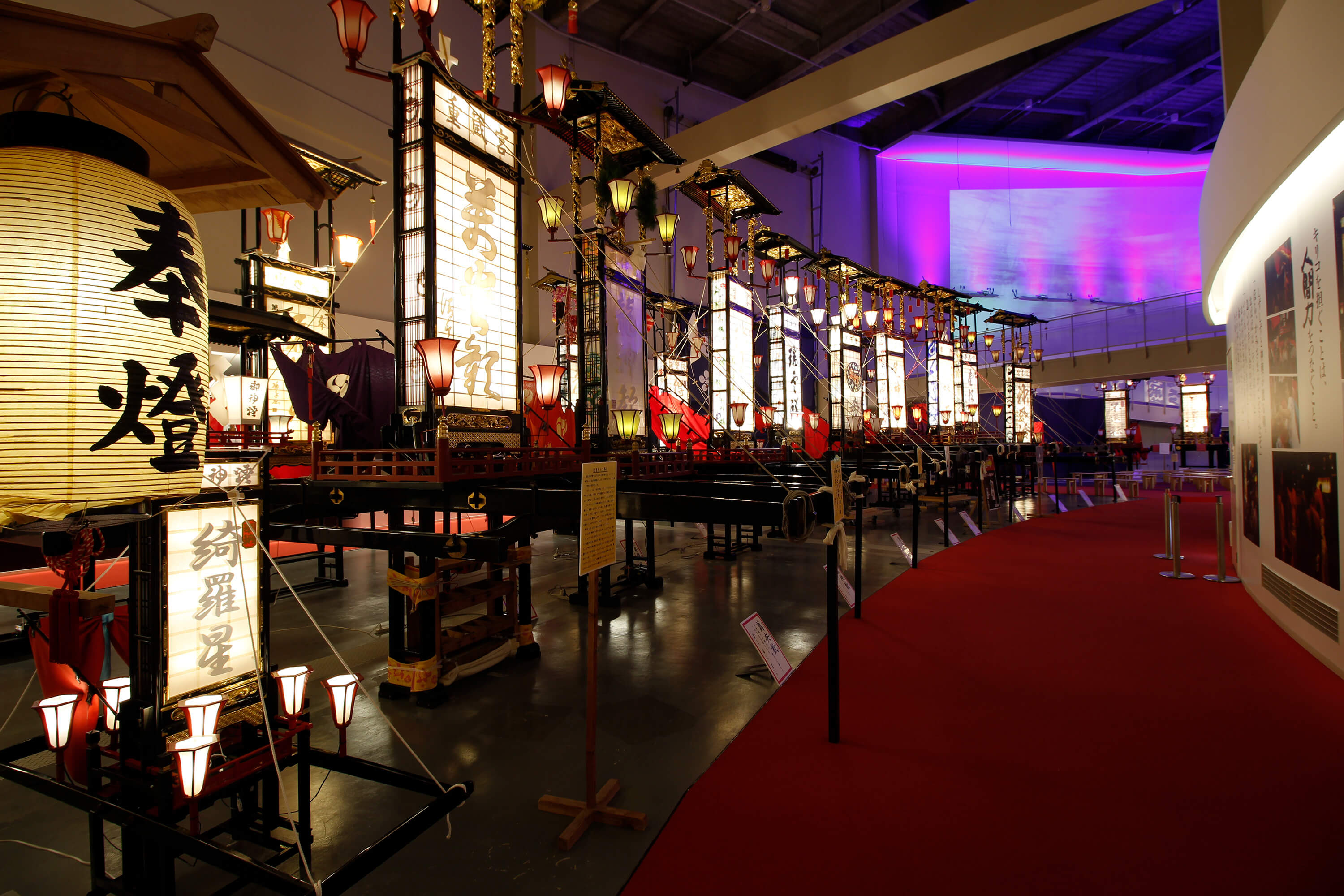
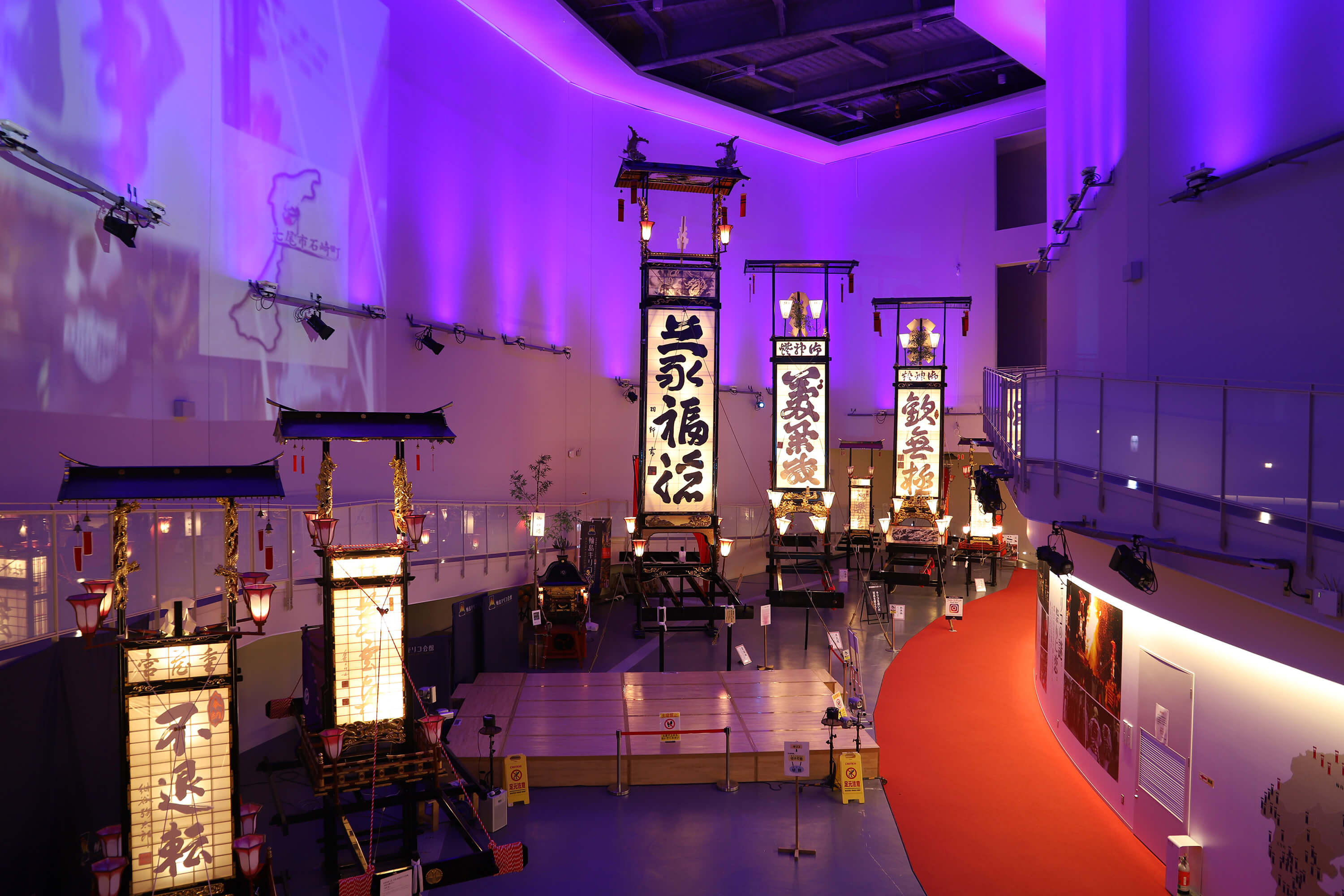
Wajima lacquerware is famous as a traditional craft of Wajima City, and it is made through more than 120 processes, from woodworking to painting and decoration. You can easily try your hand at Wajima lacquerware at the Wajimakobo Nagaya, where workshops with the theme of Wajima lacquerware are located. Two popular classes are My Chopstick Making with Chinkin, in which patterns are carved into Wajima lacquerware chopsticks with a needle chisel and gold powder or powder is deposited in the grooves, and My Chopstick Making with Makie, in which patterns are drawn on Wajima lacquerware chopsticks with a brush and lacquer and finished by sprinkling powder on top of the lacquer. Chopsticks made by yourself can be wonderful memorabilia from your trip.
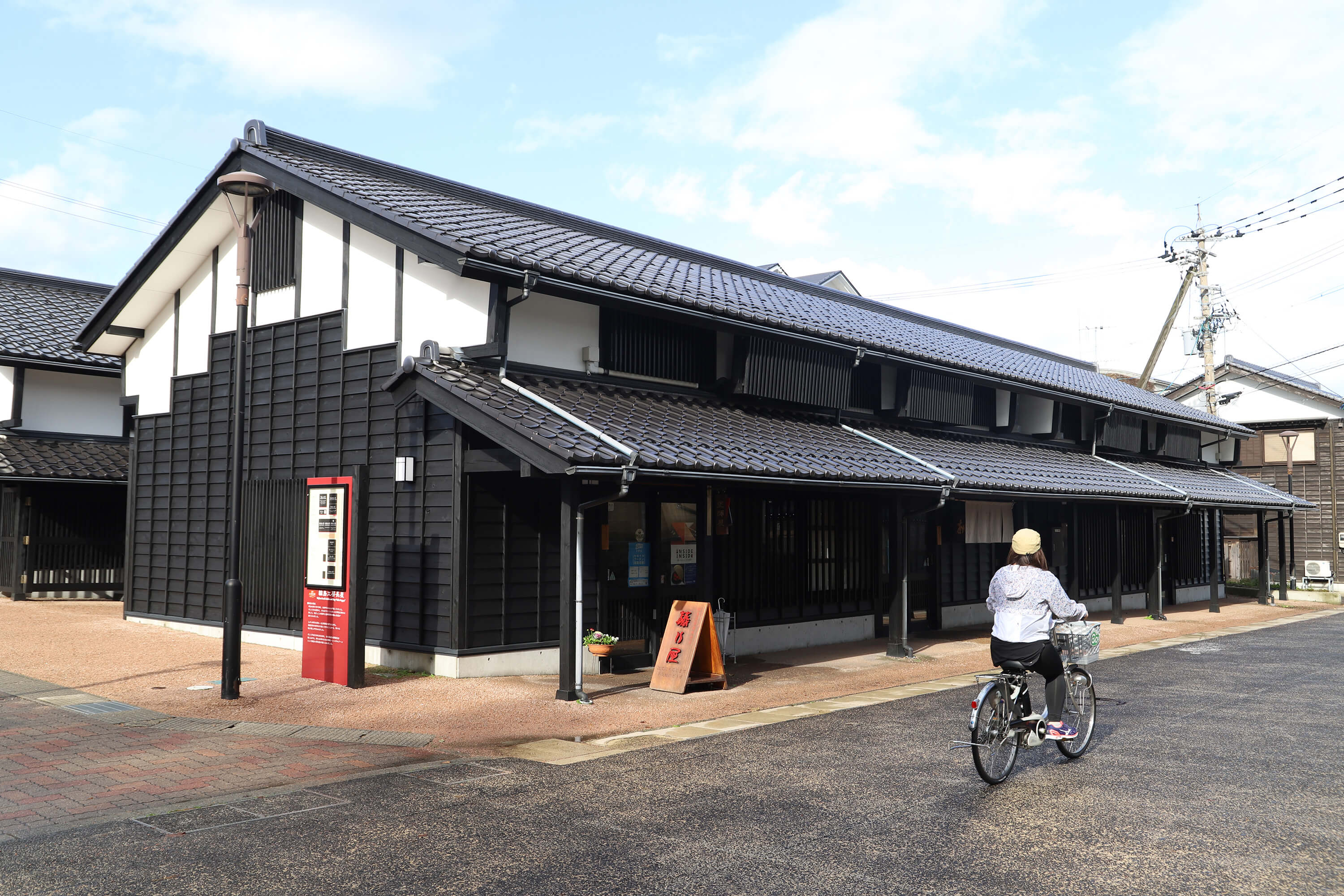
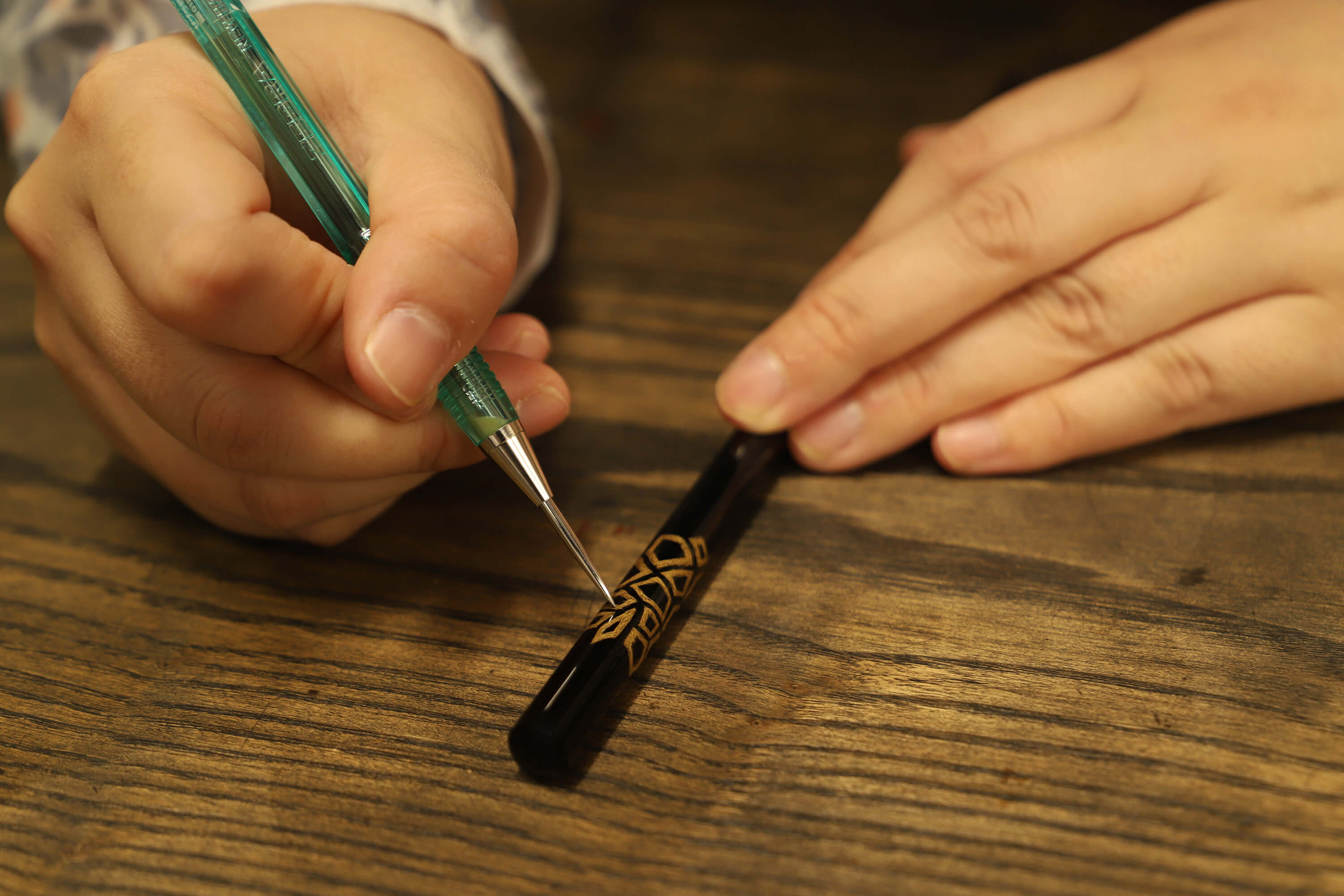
Specialties full of regional flavor you’ll want to eat in Noto
Many tourists visit Wajima City to enjoy the morning market, and at 8:00 am, stalls of locally caught fresh fish, dried fish, pickles, and folk crafts line both sides of the 350-meter-long street. It has a history of more than 1,000 years, and the old ladies who sell the products talk to tourists casually.
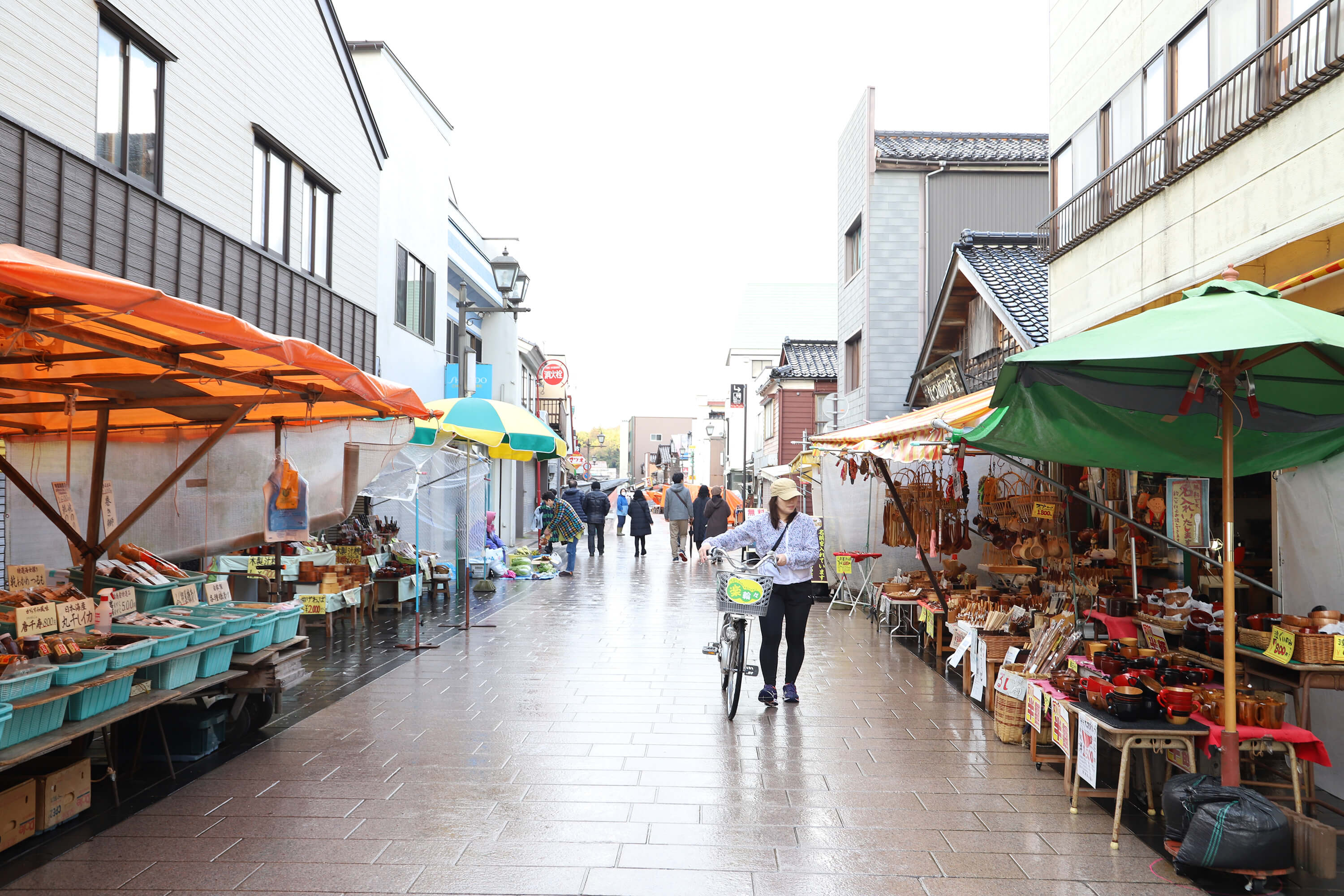
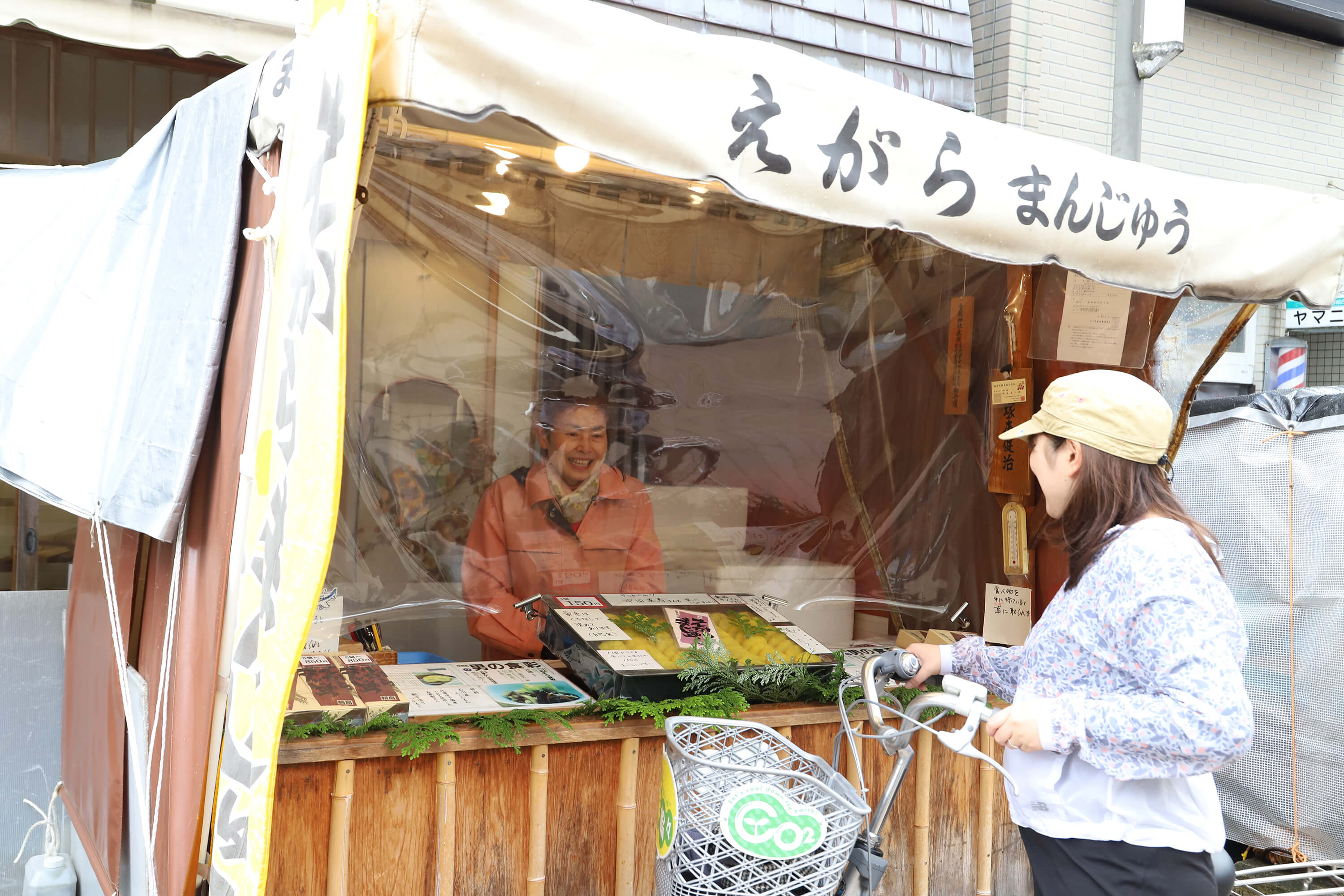
Egara Manju, which has an eye-catching bright yellow color, is a popular local sweet even in the morning market, and you can buy it at Manjudokoro Tsukamoto and other shops. The steamed manju is wrapped in koshian (bean paste) with kneaded glutinous rice flour and covered with glutinous rice dyed with gardenia yellow, and is easy to eat, so it is recommended as a portable snack when cycling.
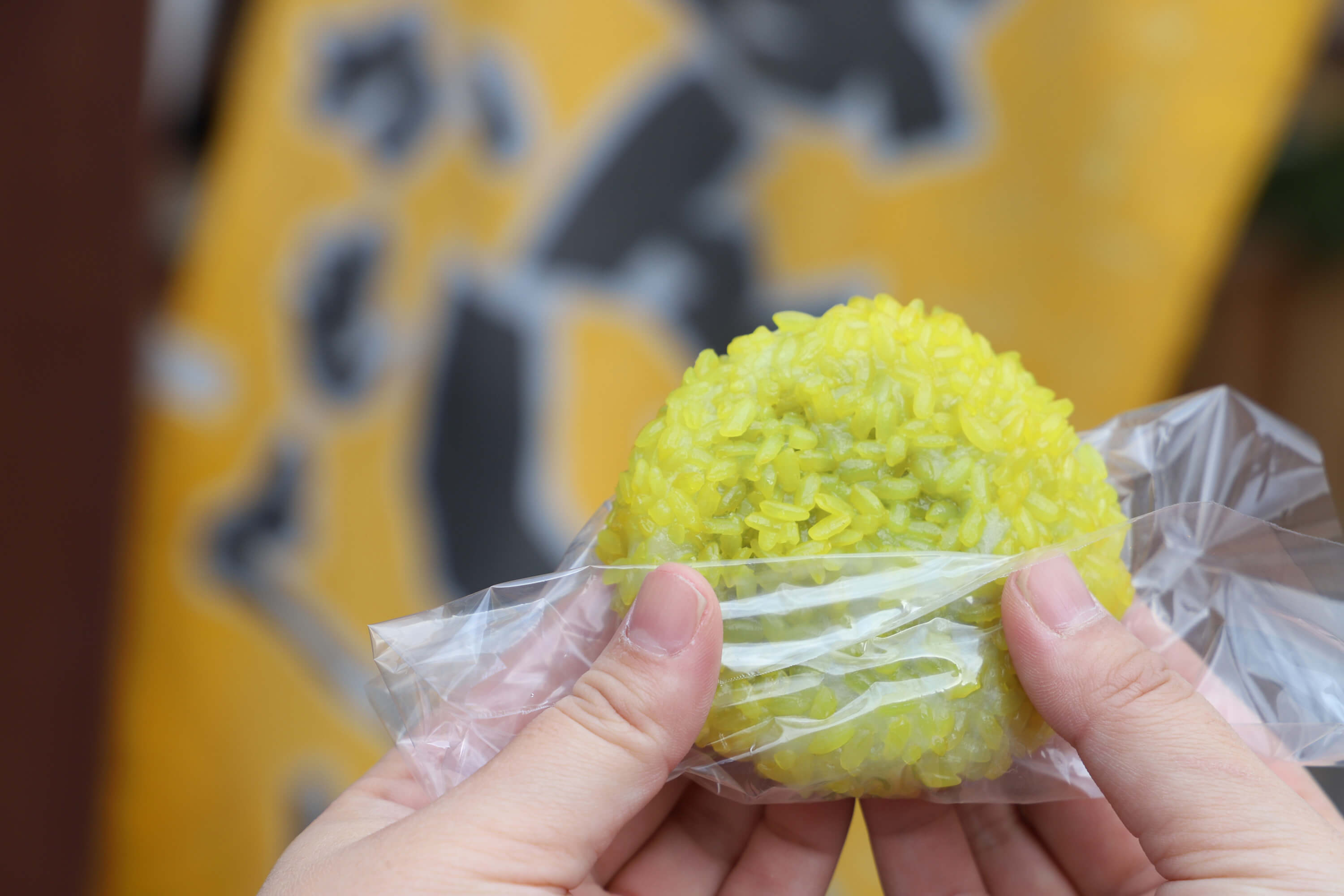
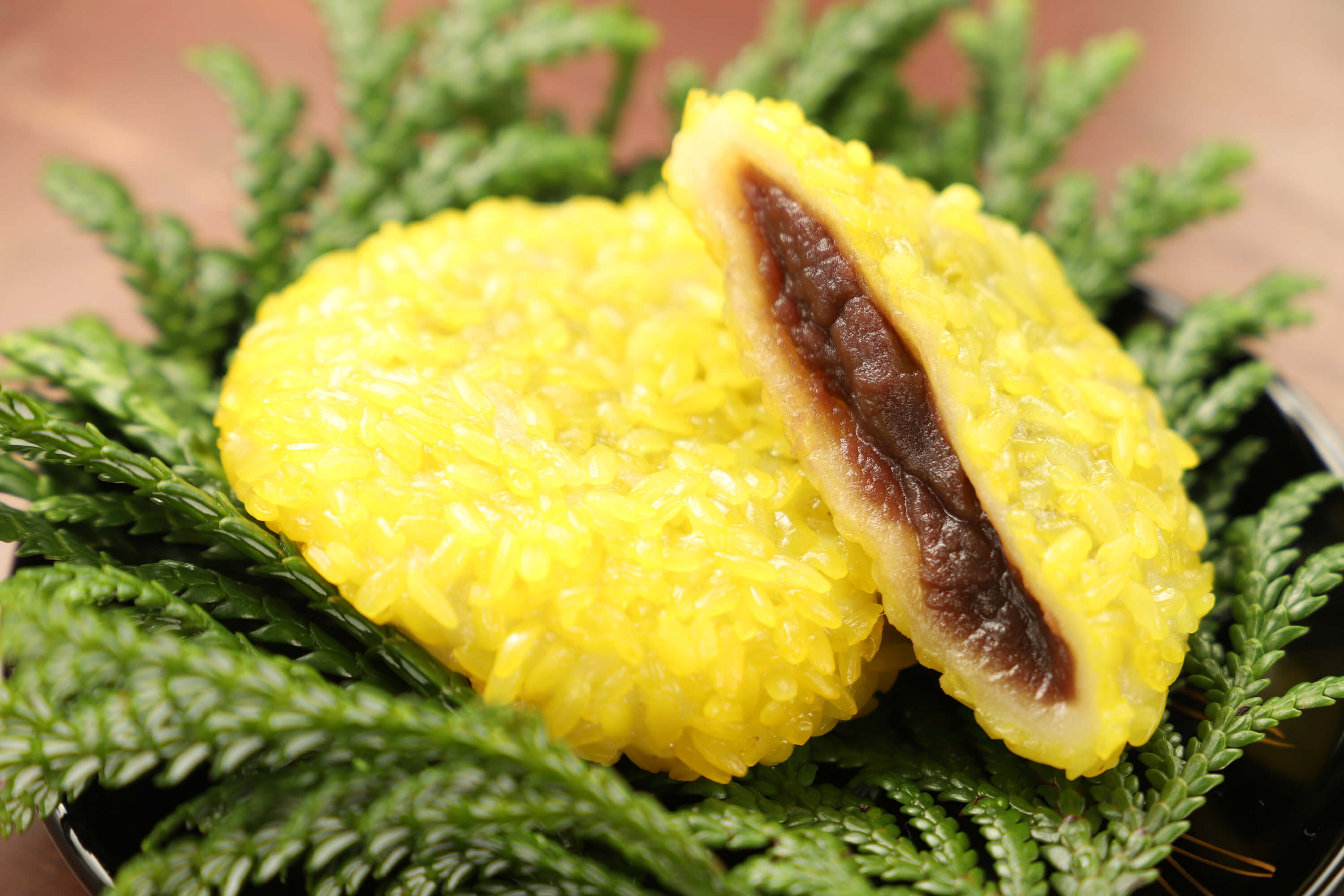
The sea off the Noto Peninsula, where warm and cold currents collide, is a good fishing ground and offers excellent seafood. Wajima City, in particular, has one of the largest catches of pufferfish in Japan, and you can eat a variety of pufferfish dishes in the city, such as pufferfish sashimi, pufferfish hot pot, deep-fried or tempura pufferfish, and pufferfish carpaccio. At Asaichi Sakaba, they serve slightly boiled natural pufferfish on top of grated yam rice. Wajima Fugudon, served on top of a bowl of rice with a special sauce made from ishiru, a fish sauce, is delicious and the meat is plump and firm. You can enjoy it at a reasonable price only in this area.
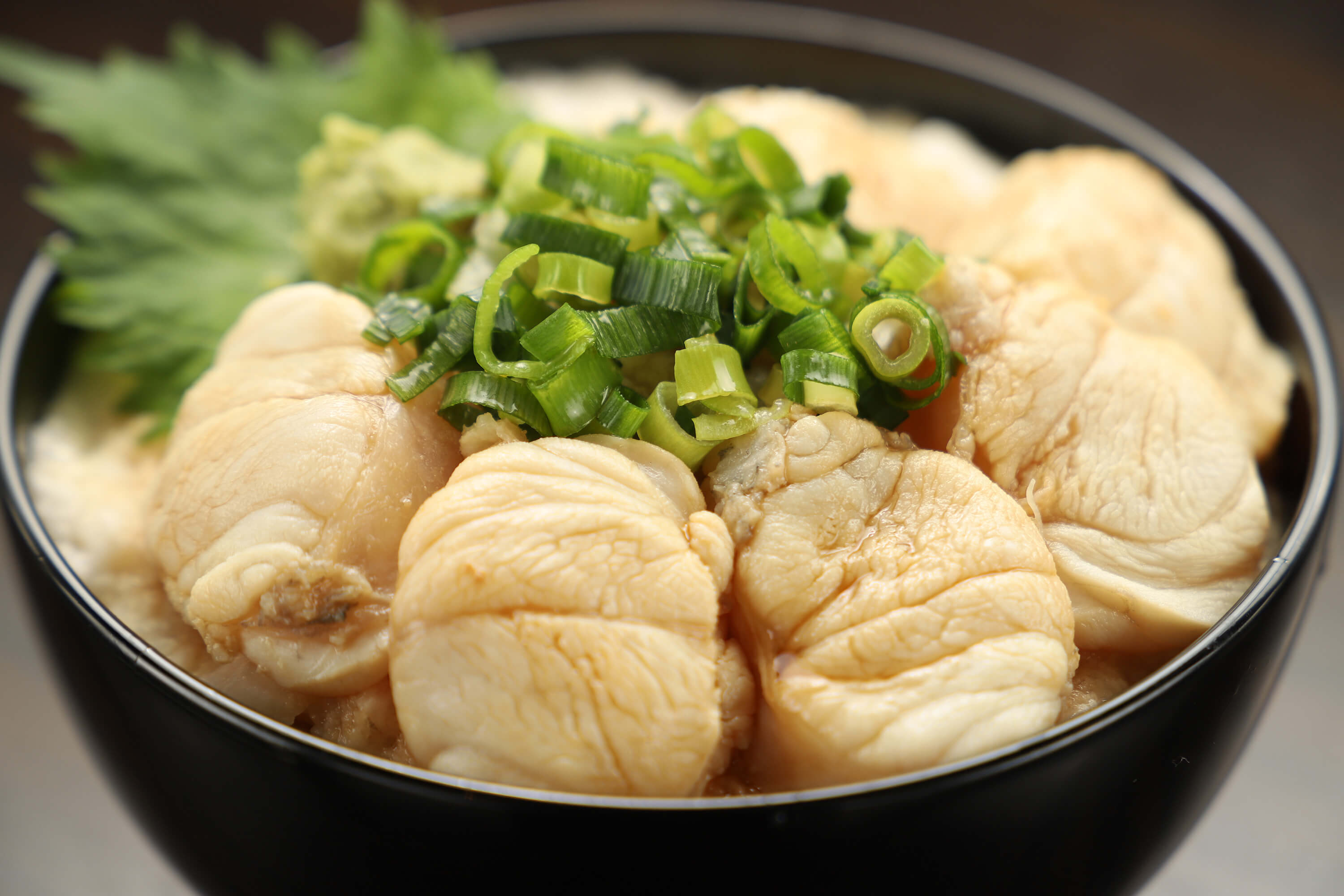
Also, if you visit Wajima City in winter, try the female snow crab, Kobakogani, which has a short fishing season from November 6 to December 29. Since it is small, the meat portion is also small, but it is full of flavor with a rich taste. It is a typical winter taste of Ishikawa Prefecture.
